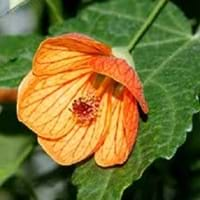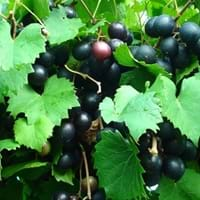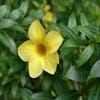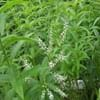Life Span
Annual
Perennial
Origin
Brazil
Southeastern United States, Mexico
Types
Abutilon Hybridum
Abutilon Megapotamicum
Abutilon Palmeri
Not available
Number of Varieties
Not Available
Habitat
Grassland, Rocky areas
Lowland, sand dunes, Upland
USDA Hardiness Zone
8-10
6-10
Sunset Zone
H1, H2, 8, 9, 12, 13, 14, 15, 16, 17, 18, 19, 20, 21, 22, 23, 24
Not Available
Habit
Clump-Forming
Vining/Climbing
Minimum Height
Not Available
Flower Color
Yellow, Red
White, Green
Flower Color Modifier
Bicolor
Bicolor
Fruit Color
Tan
Green, Burgundy, Plum, Bronze, Brown
Leaf Color in Spring
Green, Gray Green, Dark Green
Green
Leaf Color in Summer
Green, Gray Green, Dark Green
Green
Leaf Color in Fall
Green, Gray Green, Dark Green
Green, Gold, Tan
Leaf Color in Winter
Green, Gray Green, Dark Green
Light Green
Leaf Shape
Heart-shaped
V-Shaped
Plant Season
Spring, Summer, Fall
Spring, Summer, Fall
Sunlight
Full Sun, Partial Sun
Full Sun, Partial Sun
Type of Soil
Loam, Sand
Clay, Loam, Sand
The pH of Soil
Acidic, Neutral, Alkaline
Acidic, Neutral
Soil Drainage
Average
Well drained
Bloom Time
Indeterminate
Spring, Late Spring, Early Summer
Tolerances
Not Available
Pests and diseases, Shade areas
Where to Plant?
Container, Ground, Pot
Ground, Pot
How to Plant?
Grafting, Seedlings, Transplanting
Layering, Seedlings
Plant Maintenance
Medium
Medium
Watering Requirements
Form a Soil ring to water efficiently, Never Over-water, Requires regular watering, Use Mulches to help prevent water loss during hot and windy weather, Water Deeply
Requires regular watering, Water during dry weather
In Summer
Lots of watering
Lots of watering
In Spring
Moderate
Moderate
In Winter
Average Water
Average Water
Soil pH
Acidic, Neutral, Alkaline
Acidic, Neutral
Soil Type
Loam, Sand
Clay, Loam, Sand
Soil Drainage Capacity
Average
Well drained
Sun Exposure
Full Sun, Partial Sun
Full Sun, Partial Sun
Pruning
Prune in spring, Remove dead leaves, Remove deadheads
Remove branches that rub together, Remove damaged leaves, Remove dead branches, Remove dead leaves
Fertilizers
All-Purpose Liquid Fertilizer
Apply 10-10-10 amount, Apply N-P-K, Requires high amount of nitrogen
Pests and Diseases
Red blotch
Leaf spot, Nematodes, Powdery mildew
Plant Tolerance
Drought
Pests and diseases, Shade areas
Flowers
Showy
Insignificant
Flower Petal Number
Single
Single
Foliage Texture
Medium
Medium
Foliage Sheen
Matte
Glossy
Attracts
Birds, Hummingbirds
Birds
Allergy
Not Available
Not Available
Aesthetic Uses
Beautification, Showy Purposes
Beautification
Beauty Benefits
Not Available
Not Available
Environmental Uses
Air purification
Agroforestry
Medicinal Uses
Diarrhea, Lung Problems
anti-inflammatory, Anti-oxidant
Part of Plant Used
Whole plant
Fruits, Leaves
Other Uses
Showy Purposes
Sometimes used for making wine, Used to make juice, Used to make yellow dye
Used As Indoor Plant
Yes
No
Used As Outdoor Plant
Yes
Yes
Garden Design
Bedding Plant, Container, Feature Plant, Foundation, Hedges, Mixed Border, Topiary, Bonsai, Espalier, Tropical
Edible, Fruit / Fruit Tree, Rock Garden / Wall, Screening / Wind Break, Topiary / Bonsai / Espalier, Vine
Botanical Name
ABUTILON megapotamicum
VITIS rotundifolia
Common Name
Indian mallow or Velvetleaf
Muscadine
In Hindi
Abutilon
Muscadine
In German
Abutilon
Muscadine
In French
Abutilon
Muscadine
In Spanish
Abutilon
Muscadine
In Greek
Abutilon
μοσχοστάφυλο
In Portuguese
Abutilon
Muscadine
In Polish
Abutilon
Muscadine
In Latin
Abutilon
Muscadine
Phylum
Tracheophyta
Magnoliophyta
Class
Magnoliopsida
Magnoliopsida
Family
Malvaceae
Vitaceae
Clade
Angiosperms, Eudicots, Rosids
Angiosperms, Eudicots, Rosids
Tribe
Malveae
Not Available
Subfamily
Malvoideae
Not Available
Importance of Abutilon and Muscadine
Want to have the most appropriate plant for your garden? You might want to know the importance of Abutilon and Muscadine. Basically, these two plants vary in many aspects. Compare Abutilon and Muscadine as they differ in many characteristics such as their life, care, benefits, facts, etc. Every gardener must at least have the slightest clue about the plants he wants to plant in his garden. Compare their benefits, which differ in many ways like facts and uses. The medicinal use of Abutilon is Diarrhea and Lung Problems whereas of Muscadine is anti-inflammatory and Anti-oxidant. Abutilon has beauty benefits as follows: Not Available while Muscadine has beauty benefits as follows: Not Available.
Compare Facts of Abutilon vs Muscadine
How to choose the best garden plant for your garden depending upon its facts? Here garden plant comparison will help you to solve this query. Compare the facts of Abutilon vs Muscadine and know which one to choose. As garden plants have benefits and other uses, allergy is also a major drawback of plants for some people. Allergic reactions of Abutilon are Not Available whereas of Muscadine have Not Available respectively. Having a fruit bearing plant in your garden can be a plus point of your garden. Abutilon has no showy fruits and Muscadine has showy fruits. Also Abutilon is not flowering and Muscadine is not flowering . You can compare Abutilon and Muscadine facts and facts of other plants too.





